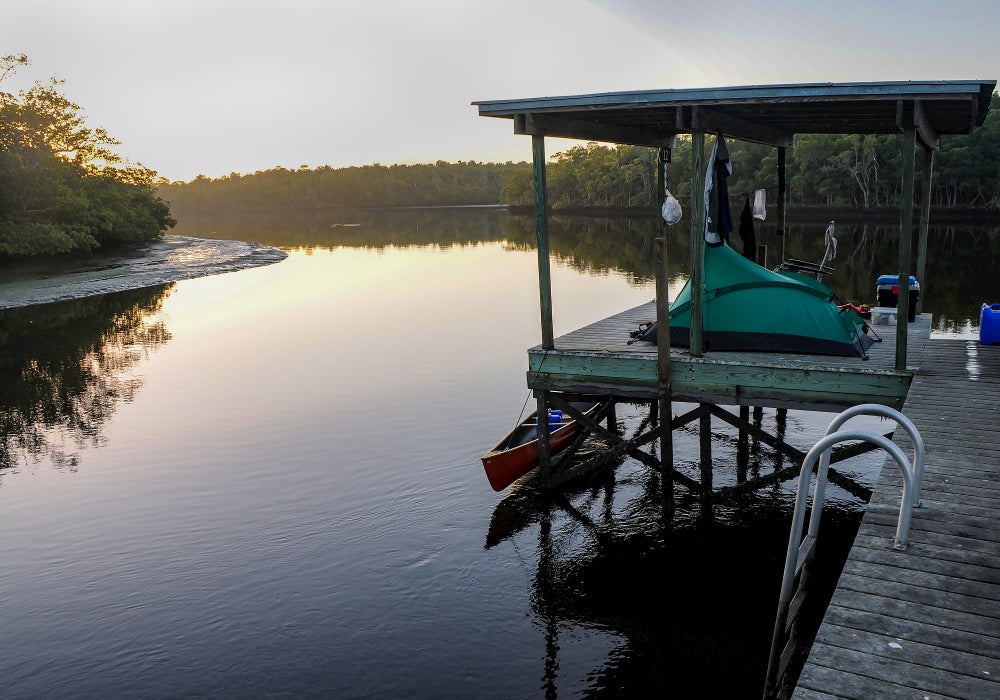Great Basin National Park might be Nevada’s best-kept secret. It’s one of the least-visited parks annually, which translates to few crowds, quiet trails, and stunning vistas all to yourself. The park’s craggy mountain slopes, intricate natural cave systems, and ancient forests combine the intricate geology of the Sierra Nevada with the stark beauty of southwest deserts. It’s the type of dry, vast landscape that doesn’t wind up on as many postcards as glacial peaks or roaring rivers. But it will captivate you in the subtle details found only through getting your feet on the ancient soil.
Since Great Basin National Park is remote and rarely visited, planning a trip here requires some knowledge about what to expect. We’ve collected regional information and reviews from campers on The Dyrt to compile this comprehensive guide to exploring Great Basin National Park.
Great Basin National Park: A Camper’s Guide
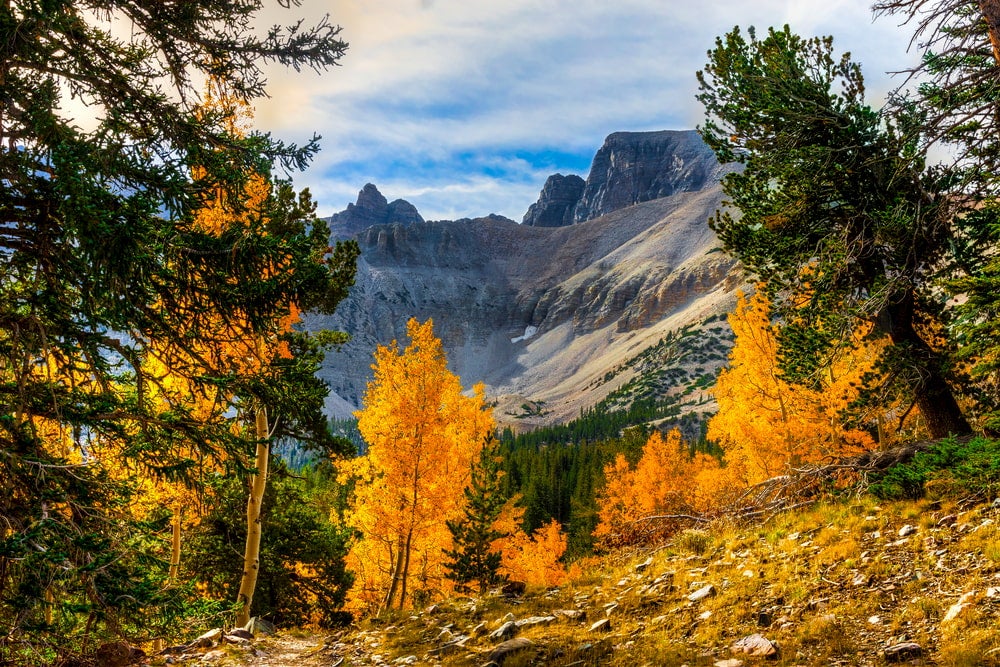
Great Basin was first designated a national monument in 1922, to preserve the limestone caverns that Absalom Lehman discovered in 1869. Then in 1986, President Reagan upgraded it to a national park. Even though Great Basin has a more recent history as a national park, the region is ancient. The mountains of the park were formed a few million years ago. The limestone caverns began forming somewhere between two and five million years ago. From there the geological phenomenon of the great basin began to occur. The water sources have no outlet to the sea. So, they pool into salt lakes and evaporate in the desert air, leaving behind basins separated by mountains.
The oldest human inhabitants in this area lived here more than 12,000 years ago. And the ancient bristlecone pines that continue to grow today began over 4,000 years ago. It was home to a few Native American tribes that made up the Great Basin Tribes (Shoshone, Ute, and Paiute). In 1776, European settlers “rediscovered” the land.
What to See and Do in Great Basin National Park
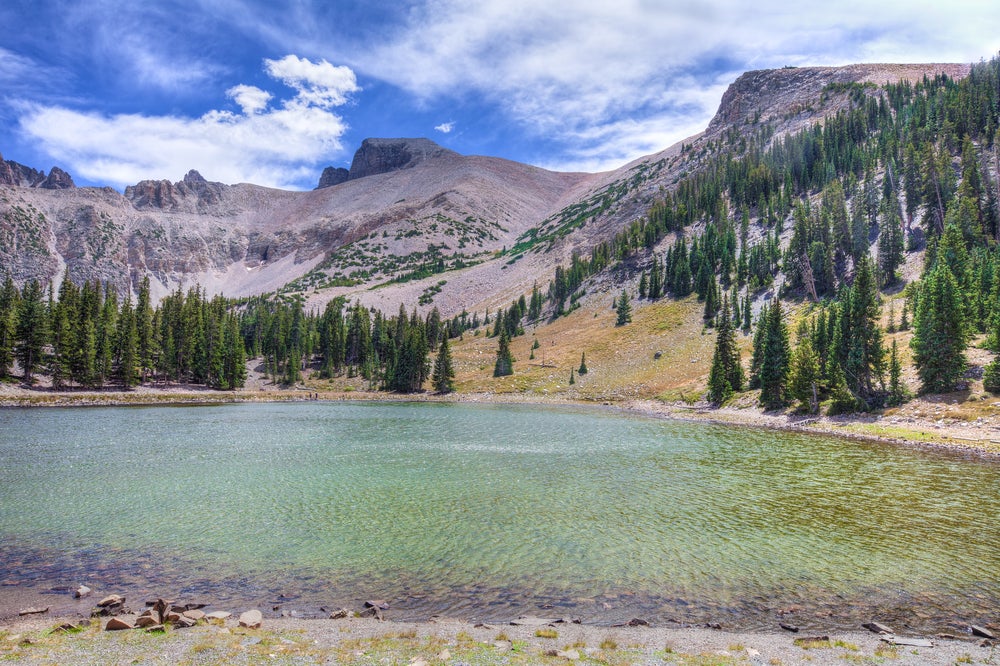
Are you looking for a stunning landscape and quiet camping in Nevada? Experience just that at Great Basin National Park.
Driving
The Wheeler Peak Scenic Drive is a 12-mile road that begins on the west side of the park. It starts at 7,000 feet and takes you above 10,000 feet. The drive provides unsurpassed views of the basin, culminating with breathtaking views of the park’s crown jewel, Wheeler Peak. It’s also a great way to access some of the best hiking trails in the park.
Fishing
While Nevada is the driest state in the U.S., fishing is more than accessible at Great Basin, and a a welcome reprieve for anglers in the Silver State. Baker Lake is the only lake in the park open to fishing, offering isolated fly fishing at scenic alpine lake. For those looking for easier access to casting, there are several creeks across the park home to lively trout. A Nevada state fishing license is required for all persons 12 years of age or older, and please note that the park does not sell fishing licenses. It’s recommended to purchase your fishing license online at the Nevada Division of Wildlife website, and printed out before your trip.
Caving

While many people might not be aware, there are over 40 caves in Great Basin National Park. While the majority of them are open for tours and feature guided tours, the Little Muddy Cave is the only remaining wild cave. But most people tour the Lehman Caves, some of the most famous limestone caverns in the U.S. The Lehman Caves include several large rooms and palaces featuring a variety of formations.
Stargazing

Great Basin doesn’t mess around when it comes to stars. It’s one of the darkest night skies in the U.S. The park is recognized by the International Dark Sky Association as an International Dark Sky Place. It’s also a proud member of the National Park Service’s Night Sky Program. On a clear night, you can clearly see the Milky Way and billions of stars that will trump a visit to your local observatory.
Hiking
One of the best ways to explore Great Basin is on one of the many hiking trails that can take you around the park. See for yourself why this park is a rare gem on these distinct hiking trails.
- Bristlecone Pine Trail: The easy 3-mile Bristlecone Pine Trail winds through the Wheeler Peak Grove, and gives you a chance to get face-to-face with the oldest non-clonal organisms on earth. Most of the trees along this trail are over 4,000 years old, and these specimens are even rarer due to their unique location. You can combine this trail and the Glacier Trail for an extended 4.5-mile hike.
- Wheeler Peak Trail: Making the 8-mile trek up the Wheeler Peak Trail is worth the 360-degree vistas at the top. The trail takes you through alpine meadows, following a ridge to the summit. Watch your step, as the surrounding scenery competes for your attention. Wheeler is the tallest mountain in the park, meaning the hike up offers the best views for hundreds of miles.
- Lehman Creek Trail: The 7-mile Lehman Creek Trail is an excellent option for those who want even more solitude. Following Lehman Creek, the trail passes through several different habitats. It also provides spectacular views of Wheeler Peak. It’s a great fall hike, as there are groves of aspens that shine brilliant hues of yellow and orange in the autumn.
- Baker & Johnson Lakes Loop: The 13-mile loop to Baker and Johnson Lakes can be a difficult one-day hike, or an overnight backpacking trip. The trail takes you by two alpine lakes, and over the steep ridge connecting them. The ridge offers total views of the rocky gorges below. From the ridge, you can see Wheeler Peak and Baker Peak, the two most prominent mountains in the park.
Weather and Peak Visitor Months
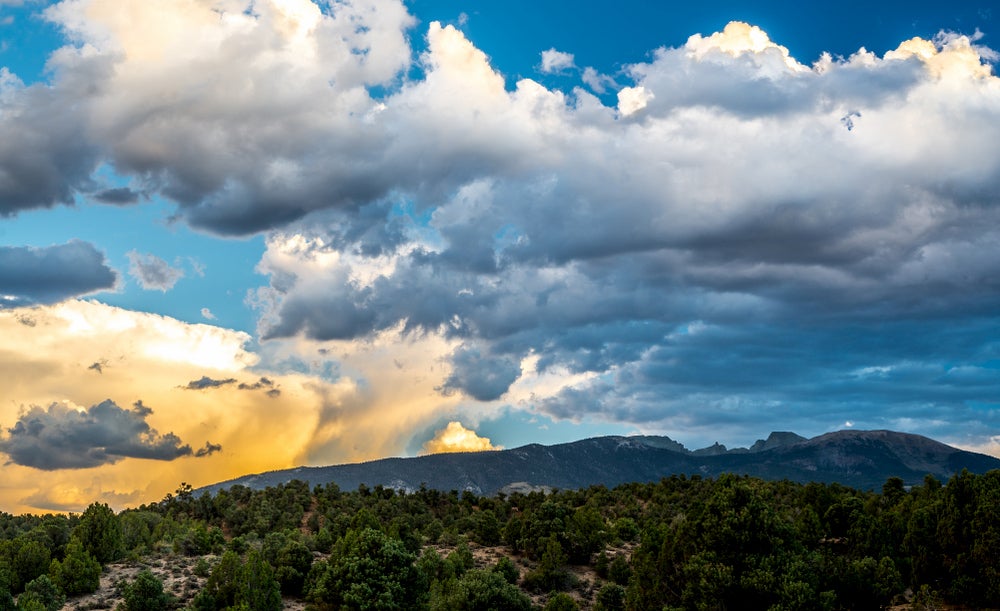
Each season in Great Basin is different, so the timing of your visit depends on what kind of experience you want.
- Spring: Spring in the park is pleasant. Temperatures warm to the mid-sixties or seventies, but there’s still snow pack higher up. The flora explodes in a rainbow of color, creating contrast against the desert basin.
- Summer: The summer temperatures are comfortably warm, rarely exceeding the mid-eighties. Most people visit in the summer, so expect company. The summer nights cool down, and the skies are clear for stargazing.
- Autumn: Who says New England gets all the color-changing beauty in the fall? The park comes alive in the autumn, with groves of Aspen trees turning bright shades of yellow, orange, and red. The daytime temps cool to a crisp sixty degrees, and campgrounds thin out, giving you your pick of sites.
- Winter: Winters in the park are peaceful. The valleys are untouched save for the occasional set of deer tracks. Skiers and snowshoers seek adventure on exposed Wheeler Peak, earning the best views in the park.
Great Basin gets very little precipitation, averaging only 13 inches a year. Most of it comes in the form of snow and scattered summer thunderstorms.
Permits for Great Basin National Park
There are three activities in Great Basin that require a permit.
Wild Caving
To access the wild cave, you’ll need to get a caving permit at least two weeks in advance. Park officials want to verify caving techniques, and screen for white-nose syndrome—a disease that is harmful to bats that can be carried into caves easily by humans. You’ll also need to prepare for spelunking with adequate gear, and high level experience before venturing in on your own.
Picnicking
The Upper Lehman campground features a reservable picnic area on-site, claimable through a special-use permit up to two weeks in advance.
Fishing
As mentioned earlier, fishing is only allowed with the proper wildlife permit from the state of Nevada. The park does not issue these permits, and insists that anglers apply for the permit online beforehand, and come prepared with the permit printed out.
Though voluntary, the park encourages you to register before backcountry camping or climbing.
Campgrounds In Great Basin National Park
When camping in Great Basin, you’ll find yourself surrounded by alpine meadows, lakes, or mountain views—and most of the time, few other campers. Here are a few favorites from campers on The Dyrt to get you started.
1. Wheeler Peak Campground
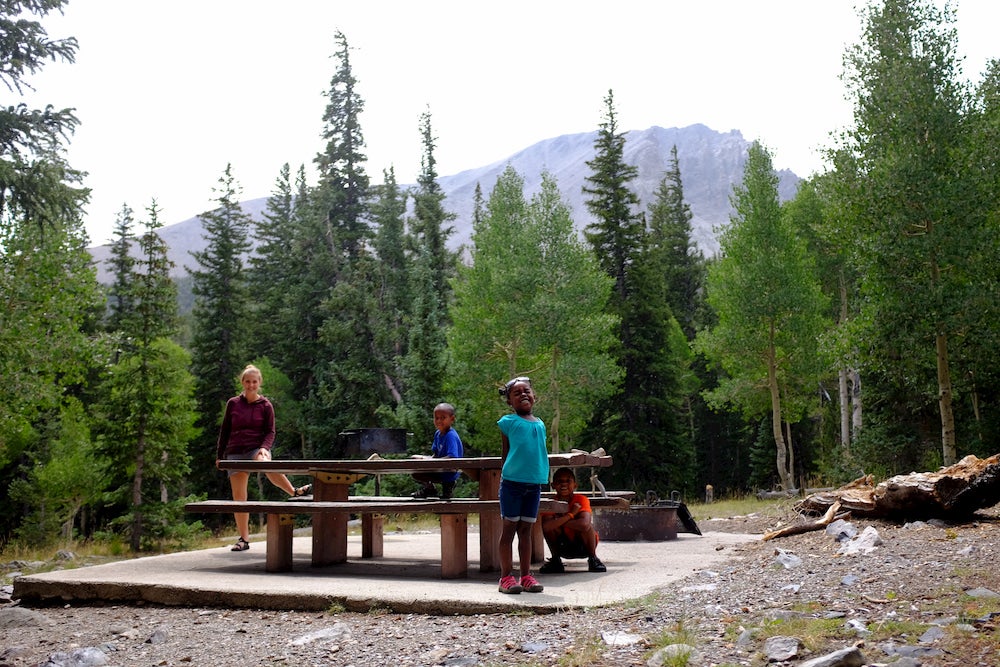
Photo from The Dyrt camper Sunshine S.
The Wheeler Peak campground sits at almost 10,000 feet, so even the summer nights can get chilly. It’s the gateway to the Wheeler Peak and Bristlecone Pine trails. The 37 first-come, first-served sites are open from June through October. Campers have access to vault toilets and running water. Expect the campsites to be quiet, even on busy weekends.
“My girlfriend and I wanted a nice quiet camping trip in the woods. We went online and found Wheeler Peak in the Great Basin National Park. We loved every second we spent there!”— The Dyrt camper Tom R.
2. Upper Lehman Creek
The Upper Lehman Creek campground sits at about 7,800 feet, offering great mountain views—according to our campers though, the sites on the south end are often considered the best. The 24 first-come, first-served campsites are open from mid-April through October, and campers have access to vault toilets, running water, and the Lehman Creek trailhead.
“I love this place! It is a HIDDEN GEM. It feels like such a secret treasure in Nevada. The stars are amazing at night time! It is a quiet place with no crowds. It feels like a more “wilderness” experience for a National Park. I am itching to come back!” —The Dyrt camper Kelly R.
3. Lower Lehman Creek
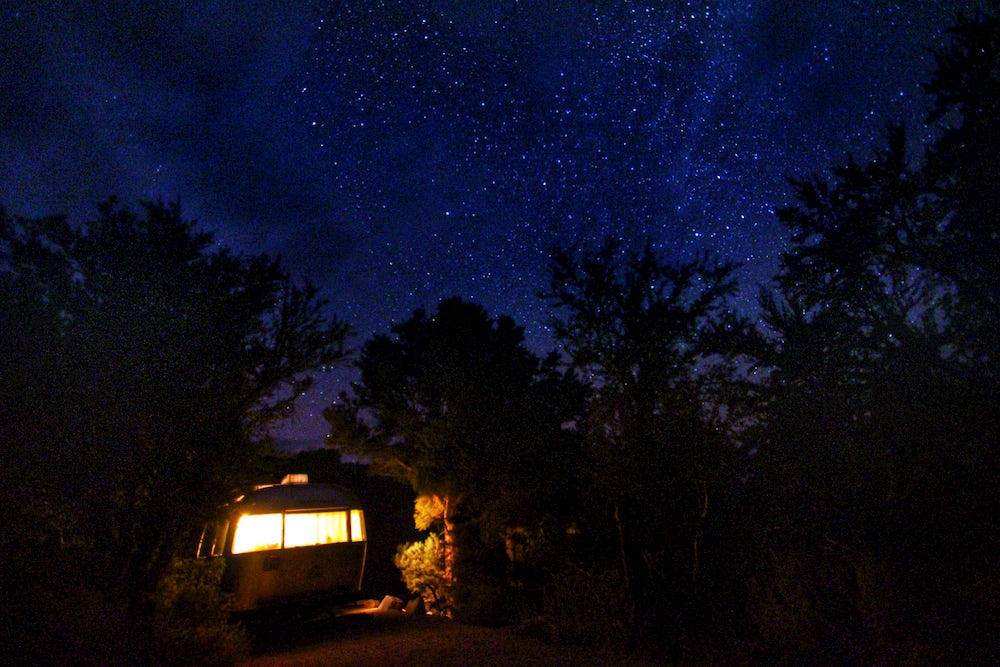
Image from The Dyrt camper Curtis B.
The Lower Lehman Creek campground is the only campground open year-round in the park. It sits at around 7,300 feet in elevation. The 11 first-come, first-served campsites are nestled in an aspen grove, providing shade and solitude for campers. There are vault toilets and water (in the summer).
“Great Basin is a park you really want to go to. Situated in the middle of Nevada, it features a sky island environment, rising from the high desert scrub to Aspen forests, to above timberline scree. And the night skies. Wow, just wow.” – The Dyrt camper Curtis B.
4. Baker Creek
The Baker Creek campground is close to the Lehman Caves visitor center. The 38 first-come, first-served campsites are open May through October. There is access to vault toilets and water. Some sites are quite spacious, making them great options for RVs.
“We had a stream running next to us, a picnic table, and plenty of room to back a truck in. There were trees to hang hammocks with views through the valley. There are trails running off from the campground so no driving is necessary.” – The Dyrt camper Liv L.
Related Campgrounds:
- Mt Charleston Camping, Mcwilliams, NV
- Topaz Lake Camping, Gardnerville, NV
- Sparks Marina RV Park, Sparks, NV
Popular Articles:
Articles on The Dyrt Magazine may contain links to affiliate websites. The Dyrt receives an affiliate commission for any purchases made by using such links at no additional cost to you the consumer.


